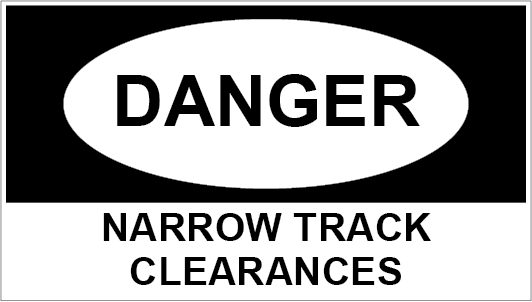Description
This document describes the requirements for making safe shunting movements.
Not what you are looking for? See more NTR Rules
Purpose
To prescribe the rules for making safe shunting movements in the Network.
Principle
Marshalling
Vehicles must be marshalled in accordance with the requirements specified in the Train Operating Conditions (TOC) manual.
Shunting
Shunting is moving trains, rakes of vehicles, or vehicles to:
- arrange or rearrange vehicle order in a consist
- attach or detach vehicles to or from a train
- move trains or vehicles to, on, or from running lines for other than through-movements
- move trains or vehicles within yards for other than through-movements
- change running lines for other than through movements.
Qualified Workers performing shunting must safely:
- walk beside the leading vehicle, or
- ride in or on the leading vehicle in a position designated as safe by the operator.
Communication
Qualified Workers need effective communication, agreement and understanding throughout shunting movements.
Qualified Workers directing shunting, and Drivers or Track Vehicle Operators, must maintain effective communication at agreed intervals.
If communication between a Qualified Worker directing shunting, and a Driver or Track Vehicle Operator is interrupted, the Driver or Track Vehicle Operator must stop the train immediately.
Narrow track clearances signs
NARROW TRACK CLEARANCES signs warn that there is restricted clearance between:
- vehicles on adjacent lines
- the track and other infrastructure or buildings.
If there are NARROW TRACK CLEARANCES signs, Qualified Workers must not stand between a moving vehicle and a vehicle on an adjacent line.
If there are no NARROW TRACK CLEARANCES warning signs, Qualified Workers performing shunting must keep at least 2m away from moving vehicles.
Stationary vehicles
Unattended vehicles must:
- be secured with handbrakes
- not be left foul of running lines without the Signaller’s authorisation.
Red warning flags/red warning lights on vehicles
Vehicles with red warning flags/red warning lights must not be moved, be shunted against, or have other vehicles attached unless:
- the red warning flags/red warning lights are first removed by the workers who put them there
- no work is being done on or near the vehicles
- it is safe to move the vehicles.
If the workers who attached the red warning flags/red warning lights are not available on-site, the Supervising Manager may remove the flags/lights after making sure that:
- no work is being done on or near the vehicles
- it is safe to move the vehicles.
Locomotive shunting
An attached locomotive starts and controls the movement of vehicles or rakes of vehicles.
The airbrakes of locomotive-shunted vehicles must be:
- sufficient to control movement of the vehicles
- controlled from the locomotive.
All vehicles carrying dangerous goods must be shunted under locomotive control.
A locomotive must be used for shunting.
Gravitation shunting and loose shunting must not be used.
Shunting movements
Workers not involved in shunting must stay clear of moving vehicles.
Qualified Workers directing shunting must:
- have adequate locality knowledge
- confer with other workers beforehand and agree about planned movements
- if necessary, arrange for clearance of fixed signals
- make sure that routes are correctly set
- make sure that it is safe for shunting movements
- make sure that workers have been warned about the intended shunting
- tell the Signaller when shunting movements within the Signaller’s area of control have been completed.
Shunting past yard limits
A shunting movement past yard limits must proceed only:
- under an authority to enter the section
- as far as necessary to carry out the shunting movement.
Shunting over points
If the Qualified Worker directing shunting is not assured that the points will hold their set positions, the points must be secured for the intended route.
Shunting over level crossings
Unless road and pedestrian traffic has been stopped, a shunting movement must stop before and clear of a level crossing.
The shunting movement over the level crossing must not begin before it is safe to do so.
Stabling on running lines
Trains, track vehicles, or vehicles may be stabled on running lines only:
- if an authorised publication has advertised the stabling, or
- with the authority of the Network Controller responsible for the location.
Failed trains, track vehicles, or vehicles stabled on running lines must be removed as soon as possible.
